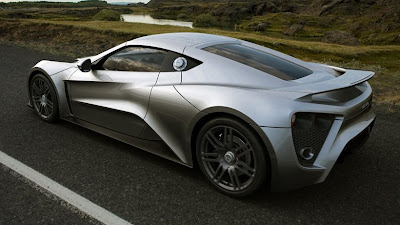
SLR Stirling Moss is much more than powerful. It is also highly exclusive. Only 75 of them will be built. And it won't be anyone with 750,000 euros that will be able to buy one unit. Mercedes-Benz will select the ones that will be eligible to take one Stirling Moss to their homes. Homes, anyway, will not be the best environment for these machines. They prefer to be on tarmac, the best sort of it.
With the same powertrain used by SLR, or else, a 5.5-litre V8 supercharged engine pumping out 650 bhp managed by a 5-speed automatic transmission, Stirling Moss will be able to accelerate from 0 to 100 km/h in 3.5 s and to reach a top speed of 350 km/h. Since the car has no hardtop, what would improve its aerodynamics, this is a really astonishing top speed.
Apart from its great performance, the new-born classic also has great looks. Just pay attention to its double exhaust pipes at each side of Stirling Moss, its huge air intakes, the curves of the body and the continuous lines from the head protections until the back of the car. The scissor-doors are part of this masterpiece, one that will not only feast the eyes of its beholder, but all feelings a nice car to drive provokes.










Source: Mercedes-Benz via AutoBlog

















































